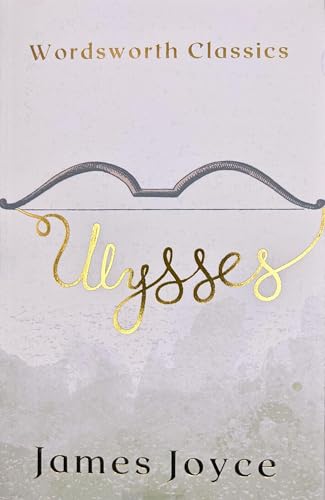Ah, James Joyce’s Ulysses – a book that’s as famous for its complexity as a Rubik’s Cube solved blindfolded. Welcome to this review where I’ll explore its messy yet fascinating stream of consciousness, dive into the rich journeys of complex characters like Leopold Bloom and Molly, unravel the layers of symbolism, and tackle the challenging language and structure that many have found puzzling but rewarding. Buckle up; it’s going to be a wild ride!
In a nutshell
Ulysses, penned by James Joyce, is not your typical beach read. This modernist masterpiece weaves an intricate web of thoughts and experiences as you follow the lives of Dubliners over a single day. The book dances in the genre of literary fiction, known for its groundbreaking stream of consciousness writing style.
The themes are as thick as a bowl of oatmeal, exploring identity, time, and the mundane versus the profound. Joyce takes you on a journey that’s both a puzzle and an adventure, leaving you wondering if you accidentally dropped your cereal into a blender.
Stream of Consciousness: A Roller Coaster Ride for the Mind
Ah, the stream of consciousness! Sounds fancy, right? But, don’t worry, it’s not just some literary gobbledygook. Picture this: you’re at a crowded party, eavesdropping on random bits of conversation, tidbits of juicy gossip, and that one guy who’s always talking about his pet lizard. This is stream of consciousness, a narration style that mimics the jumble of thoughts, just like you’d hear in your head on a caffeine high.
James Joyce’s ‘Ulysses’ is a grand showcase. When I read ‘Ulysses,’ I felt like I was on a city bus—hearing random snippets of conversation, jumping from thought to thought, nonsensical but somehow making sense. It’s like Joyce opened a window into human consciousness and forgot to close the door, letting every stray thought float in.
Take Leopold Bloom, the main character. His mind flits from the ordinary to the existential, from what’s for dinner to the meaning of life, often in the same breath. And it’s not all sunshine and rainbows. This style can be, frankly, like trying to understand a toddler after they’ve swallowed a dictionary. Confusing? Yes. Frustrating? Sometimes. But, without a doubt, fascinating.
But beware! Stream of consciousness isn’t everyone’s cup of tea. It demands patience and a willingness to embrace chaos. ‘Ulysses’ proves that sometimes the messiest journeys are the most rewarding. In the next section, I’ll stroll with you through the rich tapestry of complex characters and their journeys. Hang tight!
Complex Characters and Their Journey in Ulysses
Ulysses, by James Joyce, is a whirlwind of personalities and journeys. The characters in this novel are as complex as a Rubik’s Cube at a speed-cubing contest. When I first read this book, I felt like I’d been thrown into the middle of a conversation between people I didn’t know. Slowly, the characters started making sense, just like my uncle’s magic eye puzzles.
Take Leopold Bloom, for instance. This guy’s journey is an epic odyssey in one single day! I wish my daily walk to the grocery store felt as profound. Bloom’s existential musings and quirky observations reminded me of my uncle who always had a story for every dent on his car. He’s relatable, yet enigmatic, embodying the everyday man lost in thought.
Then there’s Stephen Dedalus—named after the mythical architect who soared too high. Stephen’s journey is a real mind-boggler. His search for identity had me reflecting on my own life’s decisions. I’ve always felt like a master chef juggling flaming pans of self-doubt, and Stephen’s internal struggles felt all too familiar.
Molly Bloom closes the circle. Her monologue at the end is a testament to Joyce’s ability to capture human consciousness. Her thoughts flow like a mighty river, revealing insights into love, desire, and the human heart. I wished I could see my own life through Molly’s colorful lens, but I’ll settle for stealing a peek into hers on these pages.
While the characters’ journeys might leave you scratching your head at times, they are undeniably rich and compelling. Next up, let’s swim through the symbolism and themes lurking within Ulysses like Easter eggs in Grandma’s backyard.
Symbolism and Themes in Ulysses
James Joyce’s Ulysses is like a jam-packed lunchbox of symbolism and themes, and I enjoyed every bite of it! But let me be honest; sorting this out makes assembling IKEA furniture look like a walk in the park. Now, you should know I’m no literary genius, but I love a good puzzle, and Ulysses did not disappoint.
We have the biggie: the parallel to Homer’s Odyssey. Joyce skips on creating a mythological spectacle and instead brings the action to regular life in Dublin. Leopold Bloom is our weary Odysseus, Molly Bloom the waiting Penelope, and Stephen Dedalus, the Telemachus in search of wisdom. It’s kind of like watching a soap opera set in ancient Greece, but, you know, without the togas and more Guinness.
The themes of identity and belonging are everywhere in Ulysses. Bloom, for instance, explores his Jewish identity while wandering through the city. This quest for self is, I’m sure, something we all relate to, whether we’re binge-watching Netflix or reading 700-page novels. And let’s not forget the theme of time. Joyce portrays a single day in Dublin, but it feels like years pass in the inner worlds of the characters. Pretty magical, if you ask me.
Joyce uses ordinary objects symbolically. Take Bloom’s soap, symbolizing personal hygiene and guilt. Or the kidney he eats for breakfast, possibly representing blood ties and ritual. It’s like a game of I Spy, but with existential stakes.
Next time, I’ll attempt to unravel the challenging language and structure, like climbing Everest with flip-flops on!
Wrestling with Words: Ulysses’ Language and Structure
Ever feel like a cat trying to use chopsticks when reading something? That’s how some of us feel when tackling Ulysses. James Joyce doesn’t make it easy, but he sure makes it interesting. There’s a word for everything happening in this book, and a dictionary should be your best friend. But even then, you’ll find yourself asking, “What’s he on about now?”
The language Joyce uses could make a thesaurus run for its money. He piles on the puns, uses wordplays like he’s in a stand-up comedy club, and invents words with more syllables than you would ever need in your life. Reading Ulysses sometimes feels like decoding a secret message, except the message is a long-winded tale of a day in Dublin. Ever been on a rollercoaster? Well, Joyce’s sentence structure is the reading equivalent, and you can’t just put your hands up and enjoy the ride, you’ve got to hang on tight to understand the story.
One friend of mine tried to read it while on a treadmill—bad idea. I’d recommend not multitasking because Ulysses demands all your attention, like a toddler on a sugar high. You’ll find yourself flipping back and forth, trying to make sense of the jumps in narrative style and perspective. It’s messy, but it’s a beautiful kind of mess.
If you’re up for the challenge, I say go for it. Just don’t forget to wear your helmet. For those ready to ride the waves of Joyce’s mind, Ulysses offers rewards that are worth the effort.
Conclusion
Ulysses is a wild ride of a book! James Joyce took readers on a wordy adventure through Dublin, full of symbolism and quirky characters. Sure, it’s tough to read at times, kinda like trying to do a Rubik’s Cube blindfolded. But, if you stick with it, the payoff is pretty rewarding. I’d recommend trying Ulysses if you enjoy puzzles or just want to impress your book club. Remember, patience is key, and a good sense of humor helps too. This concludes my review – happy reading!


